(Image above – Looking back towards the Monadliath Mountains. Photo Adam Brewster) 2021).
Pt 1: Here
Pt 2: Here
Pt 3: Here
Pt 4: Here
Pt 5: Here
Pt 6: Here
In the next few weeks I’ll be posting an artist’s diary about creating a series of paintings for The Folio Society’s publication of The Living Mountain, by author Nan Shepherd.
(The Folio Society edition of Nan Shephard’s The Living Mountain illustrated by Rose Strang and introduced by Robert Macfarlane is exclusively available at www.foliosociety.com)
Link to book …
The Living Mountain by Nan Shepherd, published by the Folio Society 2021
Pt 4: In the Cairngorms
- Cainrgorm Ridge from Loch Morlich. (Photo Rose Strang 2021).
It wasn’t until March 11th 2021 that Adam and I finally arrived the Cairngorms. There had been numerous setbacks with most places closed due to lockdown. We finally found and booked a self-catering hut at Glentruim Lodge on the south west side of the Cairngorms (off the road that runs north to Aviemore).
The roads from Edinburgh to Glentruim were almost empty, which made for easier driving, and luckily no snow. On arriving we explored the area – a river valley surrounded by low hills with a view of the snowy peaks beyond. Tall beech trees towered over our hut and a family of red squirrels darted around the trunks – disappearing as soon as a camera emerged. I found the grace of these beeches compelling and thought of including them in the painting series, though I’d heard they weren’t considered native to Scotland. Later though, I discovered that they are in fact most likely native to Britain, having naturally spread north to Scotland following the end of the last ice-age.
- Glentruim Cabin, Cairngorms. (Photo Rose Strang 2021)
Perhaps it was the marked contrast to being confined to the city throughout most of lockdown, but these trees and the general atmosphere of the valley felt more exuberantly alive to me than usual. The beeches looked almost as if they were throwing their branches into the bright blue sky. My painting takes me all over Scotland, to places more remote than where we were staying in the Cairngorms – Ardnamurchan, Sutherland or Torridon for example are beautiful, remote places near the sea.
Maybe it was the sheer scale of the Cairngorms though – the sense of larger than life mountains, trees and weather. I was reminded again of passages from MacDonald’s or Lewis’s descriptions of nature – trees on the verge of dancing, squirrels on the verge of speaking.
It was also the sense of uninterrupted nature – a stark contrast to trees in the city, because however lovely individual city trees can be – they’re not an eco-system or a community of trees interacting with each other. In 2018 when I’d been painting my series in response to C.S. Lewis’s Narniad, I’d learned (through reading Michael Ward’s book Planet Narnia) that Prince Caspian is inspired by the Medieval concept of Mars. Not just the God of War, as more commonly understood, but the concept of valour or courage – an ‘iron will’, and also ‘Mars Sylvanus’ – the vigorous energy of early spring. Mar-ch, with leaves shooting from the branches of trees. Birches in March become purplish-red just before they produce their first leaves, as Nan Shepherd observes in The Quarry Wood – their branches coloured like blood-veins.
While painting and researching Prince Caspian/Mars, I’d also learned something of the nature of a forest. A scientist called Suzanne Simard had discovered that trees send nutrients to each other, they are all interdependent. At the time of writing this journal, I’m also reading Robert MacFarlane’s Underland, which contains one chapter with an absolutely fascinating account of Simard’s discoveries of the complex root systems of forests.
The trees outside our cabin in the Cairngorms ‘felt’ exuberantly alive because they were exactly that – they communicated a sense of energy – not simply through the visual indicators of fresh air in the lichen that festooned the trees, the restless red squirrels, numerous birds or the scent of crystal clean air, it was the energy of uninterrupted growth and health.
- Beech trees, Glentruim. (Photo Rose Strang 2021).
The next morning when we stepped out of our cabin to look at the weather we were greeted with a beautiful snow and frost covered landscape. Our ‘wows’ were quickly superseded by ‘oh sh*ts’ however, as this made it seem less likely we’d be able to get in to the mountains. On checking our phones we discovered that Emma (our mountain guide) had already contacted us to say ‘Looks like winter has returned!’ She seemed sure we’d find a way in though.
We’d already had the disappointing news that we’d not be able to enter the Cairngorms through the northerly route and areas Nan explored so often. This was because the ski road leading most of the way into the Cairngorms had been closed for the season. ‘The best ski-ing weather we’ve seen in years – and no-one can enjoy it!’ Liam and Emma had commented.
Emma’s advice was to walk up to the plateau from the southwest, from Glen Feshie up to Carn Ban Mor (from Gaelic, meaning ‘The big pale cairn’). Since Emma seemed optimistic we could still climb, we got in our little car and headed north along the motorway to meet Emma at Auchlean carpark. The carpark was off the motorway and a few miles into the mountain valley and we soon realised the snow-covered roads would be an issue.
I rang Emma, who asked; ‘Are you in a four-wheel drive?’. I managed not to snort as I explained ‘no it’s just an ordinary car’. We agreed to meet as far along the road as our un-Cairngormworthy car would take us. We spotted Emma at the road to the carpark and stopped. A quick discussion ensued; ‘Do you think you have Covid?’ ‘No’. ‘Well, it’s a short drive, just two minutes and I’ll keep the window open’.
Before leaving Emma’s car she quickly fitted us with crash helmets and ice picks; “Just in case we encounter slippy ice further up the paths” Emma explained cheerfully. I began to picture accounts I’d read of climbers hanging on to the edge of ice chasms on the slopes of Everest, hands immobilised by frostbite. Then I reassured myself with the thought that at least we wouldn’t run out of oxygen. That situation, described as the death zone, only happens at 8000 metres and Carn Ban Mor is only 1052 metres high! What were the crash helmets for? ‘There’s almost zero chance of an avalanche, it’s just a safety measure’ Emma replied reassuringly.
As we walked up the lower slopes through a forest of pines sparkling with fresh snow, I asked Emma about how she became a mountain guide. She explained that she’d grown up in the Cairngorms and that she’d always climbed, and that training really took that to a different level; ‘The difference is – you know and can say exactly where you at any moment, not just have the ability to get out of tricky situations or a sudden change in weather’. (Being able to give 100% accurate GPS coordinates would of course be the difference between life and death, if a climber breaks a leg on a mist-covered mountain).
- Walking through trees. (Photo Adam Brewster 2021)
- Walking through trees. (Photo Adam Brewster 2021)
This made sense in the light of the haunting descriptions I’d read in The Living Mountain (or heard about from friends or family) of the utterly disconcerting experience of navigating a way out of white mist in which you can’t see beyond a foot. In previous years, I’d climbed several mountains with an ex-partner, Tim. He’d learned how to navigate well, but wasn’t so foolhardy he’d walk into a blizzard given a choice. I remember one day we’d walked up into the Trossachs (a mountain region in Central Scotland) and were just about to climb onto the plateau towards the summit when a white-out blizzard descended. It was lucky we were standing next to a cliff. We simply stood there till it passed, then when the air cleared took the opportunity to walk quickly to the summit where we enjoyed blue skies and a view of Loch Katrine far below.
My mum (Gillian) had been the more intrepid mountain climber though. Her partner at the time, Des, was a geologist by training and had extensive mountain climbing experience. I’ll never forget her description of a sudden blizzard as they navigated via map and compass down to a bothy and safety. She said that all she could actually see was the front of her anorak, which became encrusted with a growing hillock of icy snow crystals. I can well imagine her relief on reaching the bothy, warmth and safety.
It’s in conditions such as these that Nan would doubtless have found herself on occasions. Alone too. I think her imaginative descriptions, visionary insights and musings might lead the inexperienced to imagine her as floating elf-like along the mountain paths in a continual reverie! It’s clear that as well as excellent navigation skills, she must have had muscles (and nerves) of steel!
Our guide Emma pointed out the tracks and marks left by various animals as we walked through the snowy wood. She wasn’t what I’d expected as guide (I suppose Adam and I had somehow imagined a tough militaristic sort) Emma looked quite arty, with a mane of light red hair and green eyes; very Scottish! We chatted about Nan, and she agreed that she must have been an incredibly experienced climber – absolutely in her element in this arctic landscape.
As Emma explained, the Cairngorms are in fact a micro-climate, a ‘mini – Arctic’ in effect, with all the temperatures, weather conditions, flora and fauna associated with the Arctic. We were by now emerging from the woodland and as the trees thinned out we were able to look back at the astonishing views behind us of the snow-covered Monadliath mountains to the west of the Cairngorms.
- Looking back towards the Monadliath Mountains. (Photo Adam Brewster 2021).
- Looking back towards the Monadliath Mountains. (Photo Adam Brewster 2021).
Colours became increasingly few, then almost monochrome as we ascended. The differences of snow revealed by texture and the constantly-changing skies reflected by the subtle colours of the snow; beautifully inspiring as a subject to paint (though difficult to paint in actuality). I thought of Nan Shepherd’s exquisite descriptions of the colours of snow:
We had climbed Morrone in the afternoon, and seen sunset and the rise of a full moon together over a world that was completely white except for some clumps of firwood that looked completely black. (in Glen Quoich next day the ancient fir trees far up the valley had the same dead black look – no green in them at all) The intense frost, the cloudless sky, the white world, the setting sun and the rising moon, as we gazed on them from the slope of Morrone, melted into a prismatic radiation of blue, helio, mauve, and rose. The full moon floated up into green light; and as the rose and violet hues spread over snow and sky, the colour seemed to live its own life, to have body and resilience, as though we were not looking at it, but were inside its substance.
We’d ascended to about 700 metres and my knees were already feeling the pain. I’ve always had slightly fragile knees and by this time the snow was up to my knees. It becomes an effort to drag your feet out of the snow, then as I became more tired and placed feet less carefully, my foot would hit the ground too suddenly at times, jarring my knee painfully. I was well aware that if we did get to the top, I’d be suffering the next day. Emma gave us rests though, to catch up and discuss aspects of the landscape. She demonstrated the types of snow that lead to avalanche; if snow has hardened to iciness, a soft, heavy fall of snow on top is liable to slide off. She cut a block of the soft top snow that had fallen during the night and demonstrated its separation from the hard snow below.
- Climbing Carn Ban Mor. (Photo Adam Brewster 2021)
- Emma demonstrating snow features. (Photos Rose Strang 2021)
- Emma demonstrating snow features. (Photos Rose Strang 2021)
- Emma demonstrating snow features. (Photos Rose Strang 2021)
Our ascent wasn’t steep however, and we weren’t in the middle of a valley but more the brow of a gradual ascent. Perfectly safe in avalanche terms. Emma pointed out the beautiful icing-sugar patterns and rhythms in the valleys, describing the way mountainous snowscapes are almost like deserts with snow-blown crystals whirling in ever-changing patterns by the wind. ‘I love the word that describes it – Sastrugi’ Emma smiled. She encouraged Adam and I onwards with promise of a rest before the last push at the ‘neuk’ (pronounced nook) further up the mountain. She showed us this spot on a map – a little nook or nick in the hill in which we could shelter for a bite to eat – sustenance before facing the windswept plateau, or ‘roaring scourge’ as Nan describes it in the introductory sentence to the Living Mountain: “Summer on the high plateau can be delectable as honey; it can also be a roaring scourge”.
Given that we were still pretty much in winter, we were fully prepared for the latter! As we struggled on, two preposterously healthy-looking youths strode past us, with skis on their backs. We exchanged a ‘hello’, then later stopped to watch them ski down a distant valley. ‘Pretty experienced’ Emma observed, assessing their elegant descent which was conducted in simultaneous loops resembling a choreographed snow-dance, leaving helix patterns in the snow behind them. (our photos below give a sense of distance and scale).
We were nearly approaching the encouragingly-named ‘neuk’, which suggested a cosy cave-like shelter from the icy wind, when I looked behind me to watch Adam catch-up after taking several photos. His face sported an expression hard to describe – something between determination, utter discomfort and resigned acceptance of what, by now, was becoming a physical struggle for both of us! At this point Emma announced ‘Here we are’ and led us into a Siberian wind tunnel (lined with wonderful examples of Sastrugi); the ‘neuk’ (or ‘nuke’ as I later named it).
- Walking into the neuk. (Photo Adam Brewster 2021)
- Sastrugi. (Photo Rose Strang 2021)
Emma demonstrated some ice-pick techniques on the ice-wall opposite where we sat. I couldn’t resist giving the wall a whack with my borrowed ice-pick, which gave me a sense of how much effort would be required to repeatedly embed the ice-pick so it was firm enough to haul yourself up such an edifice. As I walked back to our sitting spot, I noticed how wobbly my legs had become – I was pretty exhausted, or at least thoroughly ‘puggled’ to use a Scottishism. Adam echoed my thoughts, saying; ‘I think I’ve had enough’. I agreed. It would become a lot harsher on the plateau.

Rose resting sore knees. (Photo Adam Brewster 2021)
We discussed it with Emma who explained – ‘we’re pretty much on the plateau now, and to be honest the weather’s coming in a bit and we might not get much of a view’. This was, I guessed, her way of cheering us up so we didn’t feel we’d chickened out, and if she was disappointed at our lack of resolve she didn’t show it. As Adam’s tomato soup flew past his mouth once again, in an icy blast of wind, spattering Tarantino-esque onto the white snow beneath, I felt we’d experienced enough of the mountain to give us a sense of Cairngorm conditions, at least for people at our level of experience. We decided we’d use the extra time to take Emma’s suggested detour to a waterfall on the way back down.
As we descended the mountain, Adam and I had an opportunity to test out our snow goggles, acquired for exactly this occasion. A small blizzard swept across the mountain range which would normally have left me temporarily blinded, eyes streaming with tears. The goggles were a revelation – I didn’t feel a thing and more importantly I could see! I later discovered a more appropriate description of the swirling snow, and another pleasing word to add to Sastrugi; Snörök (Snowsmoke) describing powdery snow that blows in the wind, affecting visibility.
The waterfall that flows into the River Feshie cascades over tiers of rocks before spreading out and down the hill through the forest. We rested there in the peaceful shelter of the trees, quietly enjoying the sound and sparkle of the water. I got the sense that for Emma this was a spiritual, meaningful experience and that she’d no doubt hope we’d take time to enjoy the lower slopes and their beauty, ‘the total mountain’ as Nan describes in the very moving final chapter of The Living Mountain; ‘Being’.
- Waterfall, Glen Feshie. (Photo Rose Strang 2021)
- Waterfall, Glen Feshie. (Photo Rose Strang 2021)
I promised Emma I’d let her know when the book came out, then we thanked her for a wonderful experience. Her colleague Liam had already emailed us a couple of maps marked with easily accessible spots of the Cairngorms he thought we’d appreciate, so we’d decided the next day to visit Loch Morlich and An Lochan Uaine, in the north of the Cairngorms.
Our walk had taken from about 10am to 3pm and we’d managed to reach about 750 metres (about 2460 feet) of Carn Ban Mor, which is around 1052 meters (3451 feet). Not bad I felt, given our lack of mountain-walking in recent years, and the quite deep snow. That evening, when we returned to our cabin we drank lots of water and almost immediately fell asleep, rising to cook a simple dinner at around 8pm before sleeping again.
We still felt tired the next day as we walked the few miles from Loch Morlich to An Lochan Uaine and back, but were revived by views of snow-capped mountains beyond the shimmering silver water of Loch Morlich, ringed with deep green pine forests.
- Cairngroms from Loch Morlich (Photo Rose Strang 2021).
- Loch Morlich (Rose Strang 2021)
- Tree near Loch An Uaine (Rose Strang 2021)
- Trees near Loch Morlich. (Photo Adam Brewster 2021)
- Rose at Loch An Uaine. (Photo Adam Brewster 2021)
- Adam at An Lochan Uaine. (Photo Rose Strang 2021)
These pines, though impressive, aren’t indigenous, but our walk to Lochan Uaine took us through a landscape of ancient diverse forests and plants, and the Loch itself was compellingly, vividly green, as Nan Shepherd describes:
‘It lies within the tree level, which none of the others do, and has a lovely frieze of pine trees, an eagle’s eyrie in one of them, and ancient fallen trunks visible at its bottom through the clear water. The greenness of the water varies according to the light, now aquamarine, now verdigris, but it is always pure green, metallic rather than vegetable’.
- Loch An Uaine (Photo Rose Strang 2021).
- Loch An Uaine (Photo Rose Strang 2021).
It was a subject that I’d normally find compelling to paint, but while I’d experienced many beautiful colours and subjects in the Cairngorms, it was the sense of Nan’s imagination I wanted to paint. Visiting the Cairngorms calmed and rewarded me in the sense that I’d known it was important to experience it afresh, but it wasn’t my experience that was important. How I’d interpret The Living Mountain – which of Nan’s visions I’d attempt to depict, was now my main preoccupation.
Coming up – Pt 5: Dreaming a response

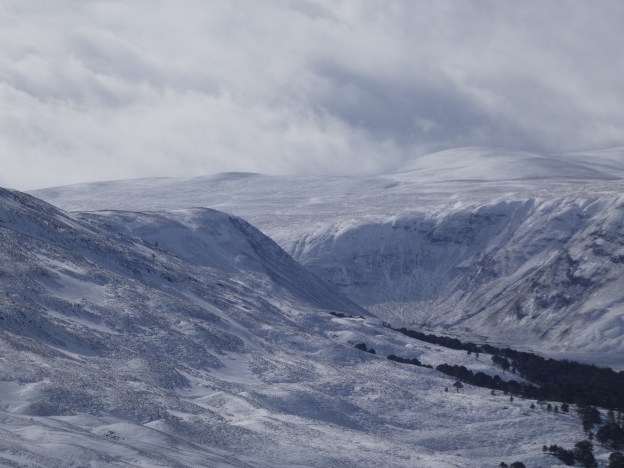
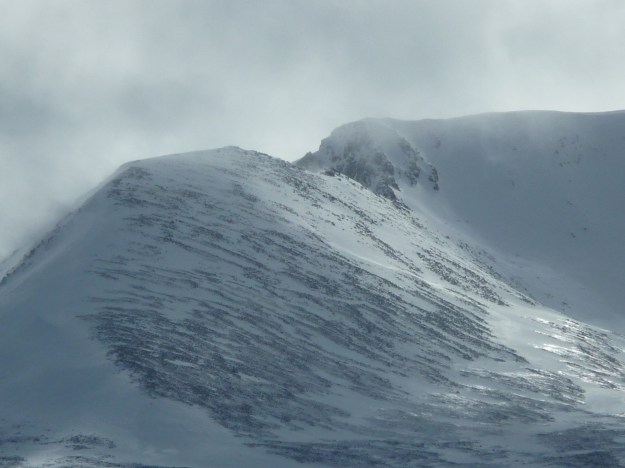
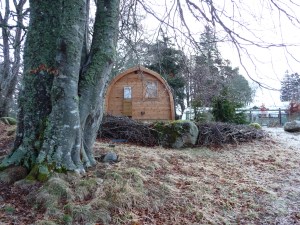
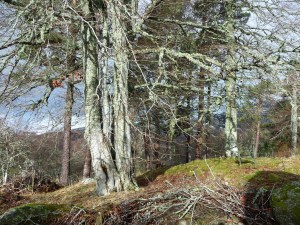
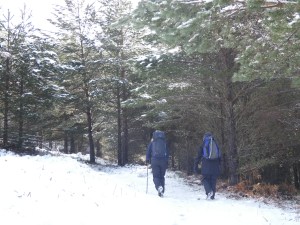

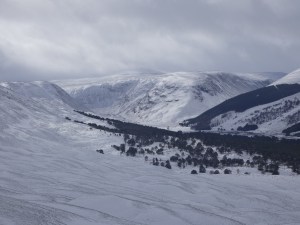
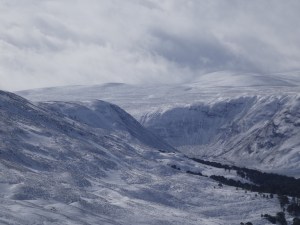


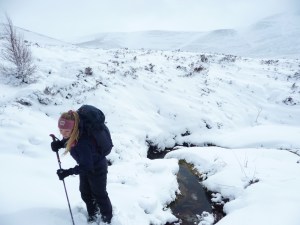

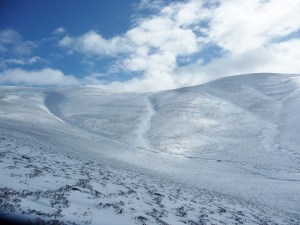
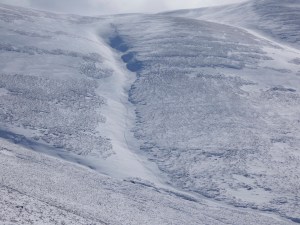
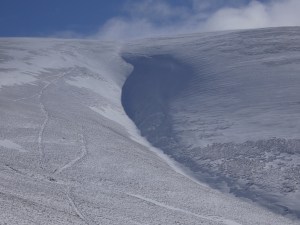
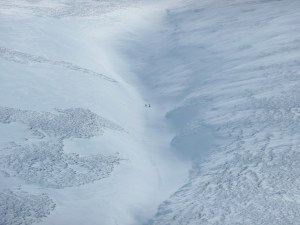
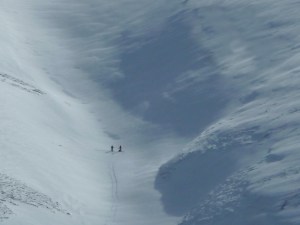

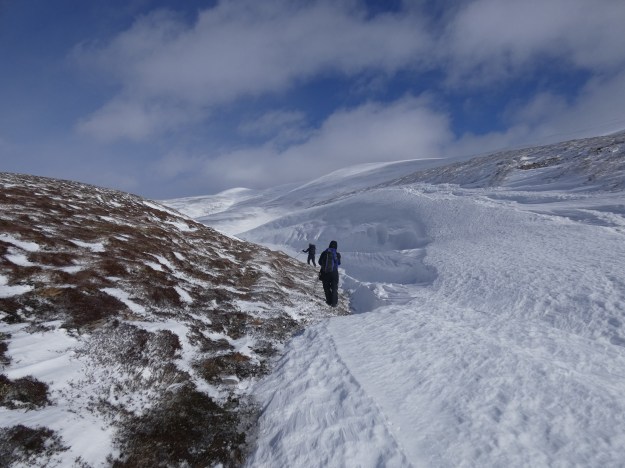
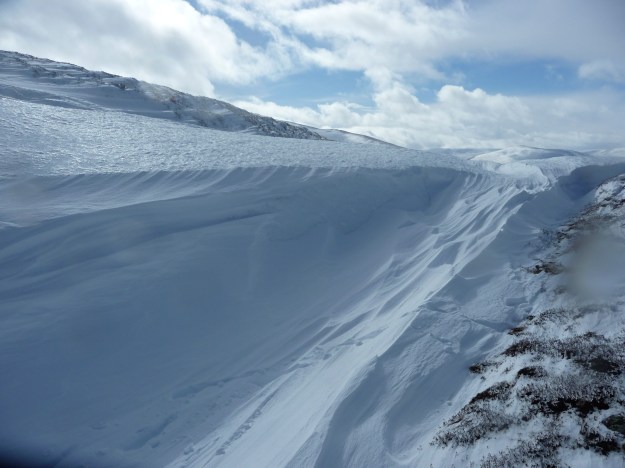
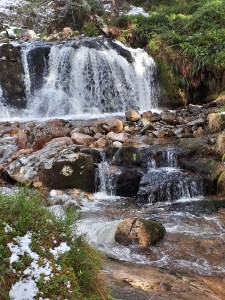
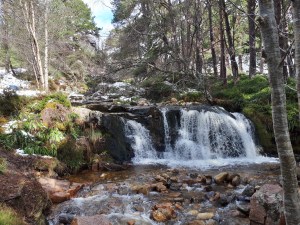
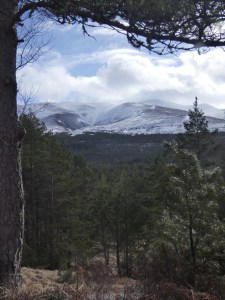
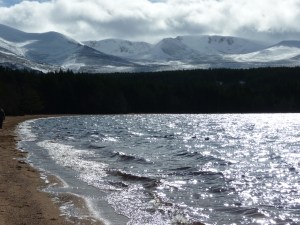
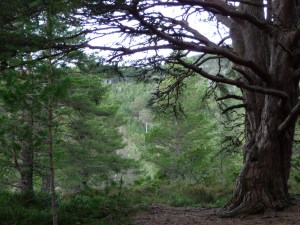
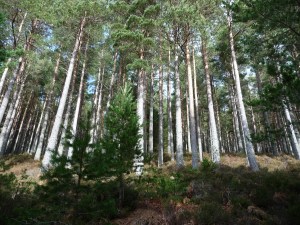
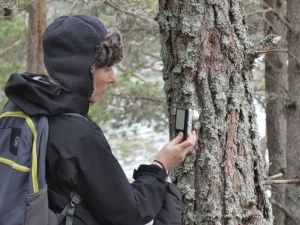
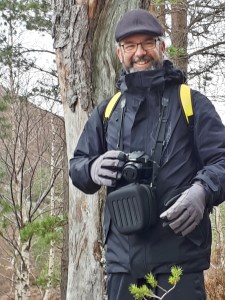

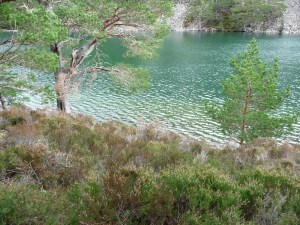
Wonderful description of really tough conditions. I had it easy when I was in the Cairngorms!
LikeLiked by 1 person
It was a challenge for me indeed, also inspured me to keep it up, will go up there in summer this year!
LikeLike
Wow, those are some of the more unique destinations I’ve seen, and thanks to you for sharing this. Do keep them coming, because this post was truly interesting!
LikeLiked by 1 person
Pingback: Painting The Living Mountain. Artist’s journal. Pt 5 | Rose Strang Artworks
Pingback: Painting The Living Mountain. Artist’s journal. Final part. | Rose Strang Artworks
Pingback: Painting The Living Mountain. Artist’s journal. Pt 2 | Rose Strang Artworks
Pingback: Painting The Living Mountain. Artist’s journal. Pt 3 | Rose Strang Artworks
Pingback: Painting The Living Mountain. Artist’s journal. Pt 1 | Rose Strang Artworks